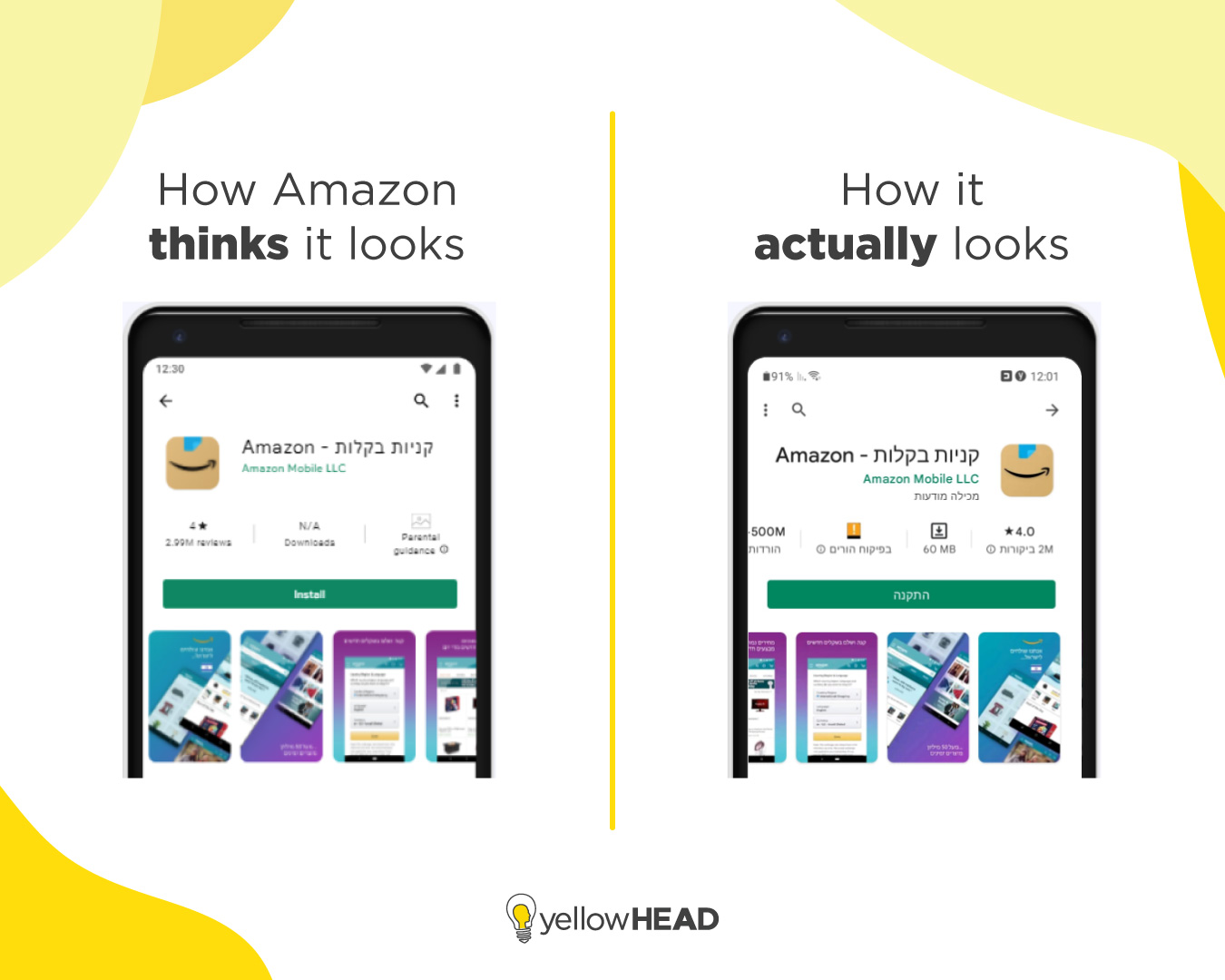5 Common Mistakes You’re Probably Making When Localizing Apps for Israel
Israel might be a small country, but its market power far surpasses its actual size. If you’re localizing an app for the Israeli market, learn how to avoid the five most common mistakes
We know it’s not cool to laugh at other people’s mistakes, but when you’re trying to localize your app for Israel without knowing how, it’s just hilarious. Or ridiculous. Depends on the case.
Jokes aside, if you want to localize your app into Hebrew, you’ll want a Hebrew speaker on your side. Making foolish (although common) mistakes can make your entire product look bad, and scare potential users away.
Whether you’re doing ASO for your app or working on its UA ads, this blog post is something you need to read!
Two important points to take into account before we jump in: although Israel’s English proficiency is quite high, many Israeli users still choose to search for games or services in Hebrew, their native language. Also, most Israeli users use Android as their operating system, making Google Play a more important focus than the App Store.
5 Mistakes You’re Probably Making When Localizing Apps for Israel
1. Right-to-Left Text Mistakes
The most obvious aspect you’ve probably noticed is that Hebrew is written from right to left.
One common belief about the reason for this is that since Hebrew is an ancient language, it was originally written using a hammer and brick board, and holding a hammer is easier with your stronger arm, which for most people is their right. When people began writing with ink on paper (such as with more modern languages like English), they wrote from left to right to avoid smearing what was written.
History lessons aside, we too often see apps that have not paid attention to this crucial difference, and text ends up looking “!sdrawkcab” (weird, right? We think so too).
If your designers are not used to working with Hebrew text assets, they might need to change some of their settings in Photoshop to get things right. The info on how to do that can be found here.
2. Screenshots Flipped
Both Google Play and iOS IL stores are set from right to left, meaning your screenshots will be flipped. I repeat: your screenshots will be flipped!
So if you’re following ASO best practices and using a continuous background on your screens to encourage scrolling, you’ll need to plan them 180 degrees reversed in advance. By the way, this also applies to Arabic.
3. Incorrect & Unnecessary Gendering
Another important thing to pay attention to is that Hebrew is a very gendered language. Many verbs are written differently when addressing men and women. Even nouns, like a table, chair, app, or icon have gender pronouns.
Failing to keep the required consistency will result in a very weird-looking sentence. On the bright side, there are some tips and tricks that you can use to make sentences nongendered (for example, by using the plural command form of verbs) and thereby increasing the size of your (already well-addressed) targeted audience.
Ping us and we’ll be happy to provide some nongendered Hebrew sentences to use on your app screen and in ad copy.
4. Wrong Design and Tone
In case you were wondering, no, adding a Dreidel to your branding does not qualify as localizing for Israel.
Overly pushing Jewish symbols often looks off and irrelevant. Plus, like other countries, Israel also has its own local slang and tone. Assistance from a local copywriter can help get the right message across and address your users in their own language (pun intended).
And a final note on models: ads with 4 to 5 blonde-haired friends come off as contrived and not localized. As much as we might like, we don’t have as many blondes around here in Israel.
5. Final Letters
This one is an easy mistake to avoid, but still too often overlooked. Some letters in Hebrew are written differently when they appear at the end of a word, and when they’re not used properly, it looks bad. Wanna do some independent QA? Make sure you don’t put these letters – כ,מ,נ,פ,צ – at the end of screenshot captions.
We hope that after you’ve read all of our tips on how to localize for Israel, you’ll get right to it. In case you need help, we happen to have talented mother-tongue Israelis that would love to give you a hand. Don’t hesitate to reach out!























